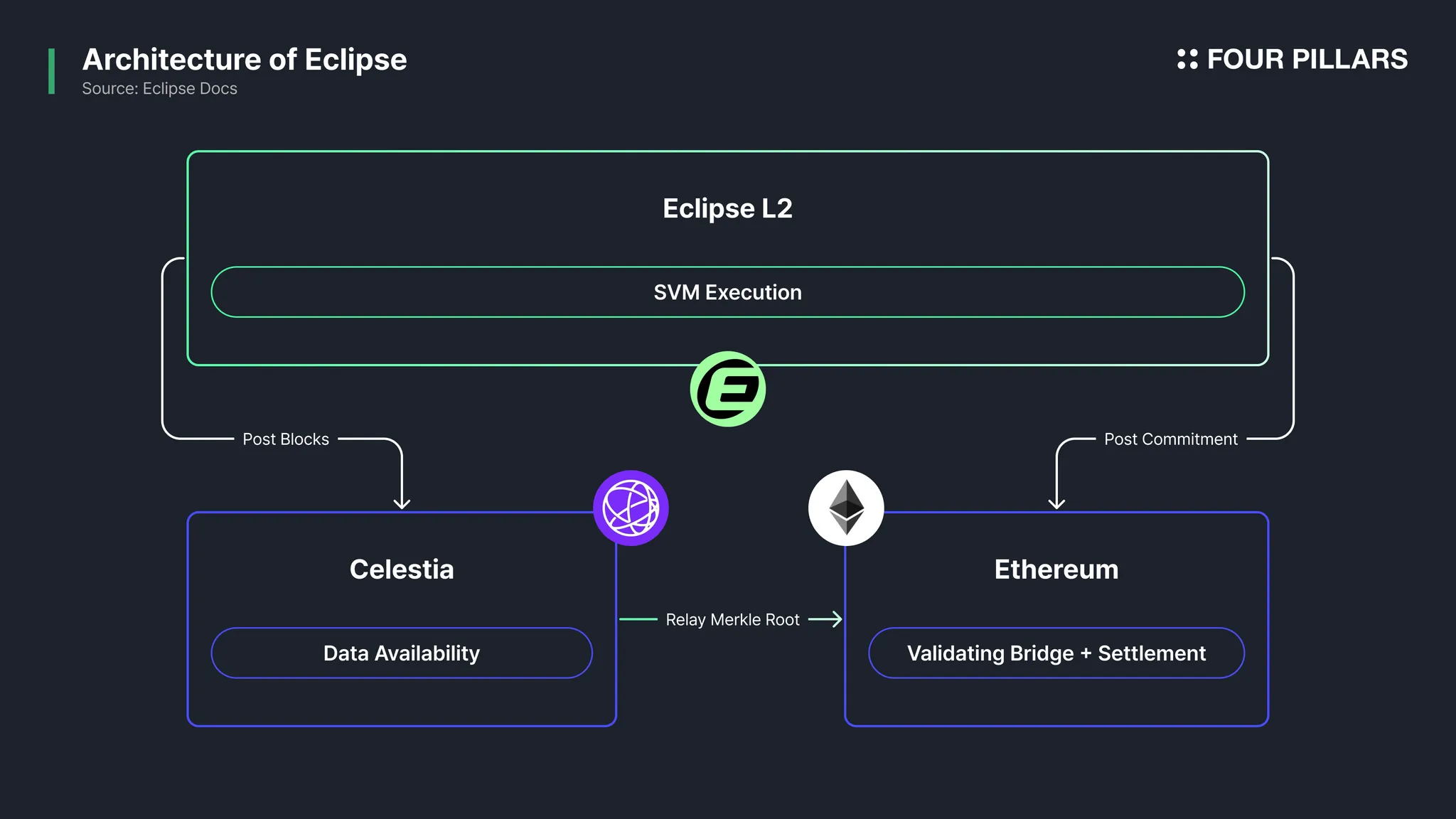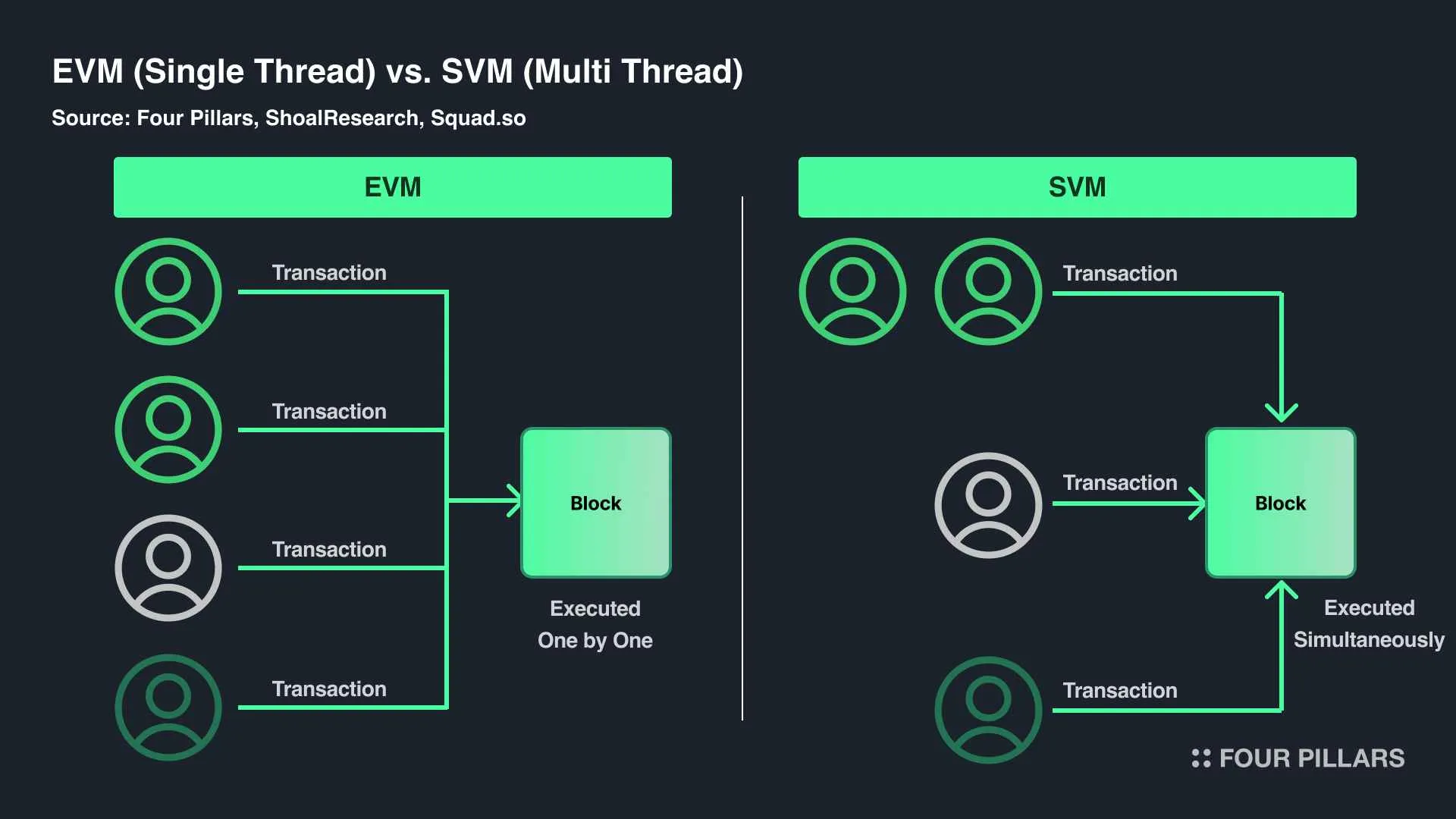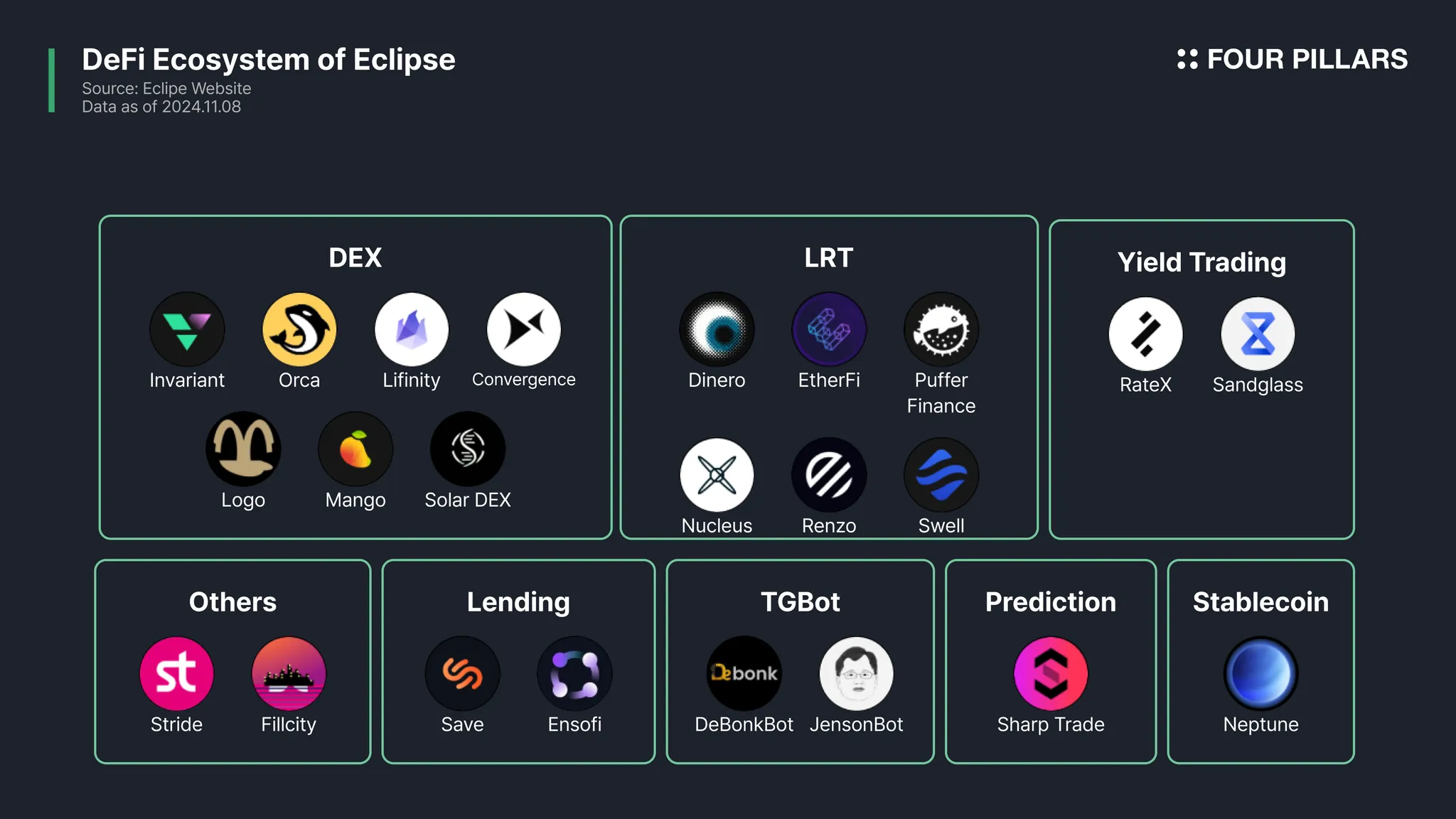Eclipse announced a public mainnet — an SVM-based Ethereum L2.
Eclipse brings two of the biggest ecosystems together, with dapps like Orca and Save from Solana, and Ethereum-based Swell and Etherfi assets available on Eclipse. Also, the gas token of Eclipse is ETH.
The success of Eclipse will depend on whether it can bring use cases that are "Only Possible on Eclipse." It will be important to build new dapps and also blend the two ecosystems.
However, Eclipse is not the only player making performant L2 or blending the Solana ecosystem. Other rollups like MegaETH and Taiko Preconfirmation are improving performance, and projects like SpiceNet, Soon, Termina, and Molecule are building SVM rollups.
Eclipse is a L2 on Ethereum that is built upon the Solana Virtual Machine (SVM). By combining Ethereum's security and liquidity with Solana's high-speed execution capabilities, Eclipse aims to create a L2 that bridges two of the largest ecosystem.

Source: What is Eclipse Mainnet? | Eclipse Documentation
1.1.1 Like Ethereum - Liquidity and Infra
Eclipse uses Ethereum as its settlement layer, ensuring that all transactions are ultimately verified and secured on Ethereum. It taps into Ethereum's vast ecosystem of decentralized applications, assets, and users while benefiting from its robust security model. Through a native bridge with Ethereum, Ethereum assets can be easily sent to Eclipse, and ETH is used as a gas token.
Additionally, through the Skate Chain, Eclipse can get conneceted with EVM dapps, allowing developers to deploy Solidity-based smart contracts on the platform.
1.1.2 Like Solana - SVM and Local Fee Market
Eclipse's use of the Solana Virtual Machine (SVM) brings several advantages.
The SVM's parallel execution allows for multiple transactions to be processed simultaneously, significantly increasing throughput. Additionally, the SVM's efficient state access model, combined with Eclipse's implementation of local fee markets, enables more granular and fair pricing of blockchain resources.
In the local fee markets, transactions only compete with others that access the same portions of state, rather than with all transactions globally. This approach ensures that users executing simple transactions (like token transfers) don't have to pay inflated fees due to high activity in unrelated parts of the network, such as popular NFT mints or DeFi protocols. Local fee markets help maintain stable and predictable transaction costs for average users, even during periods of high network activity. However, the implementation of local fee market is the byproduct of SVM, rather than a special implementation by Eclipse.

Source: Solana Mega Report V2 - Like Apple, but Unlike Apple | Four Pillars
Solana has the slogan “Only Possible on Solana.” Solana has always tried to build their own ecosystem that stands out where there are same forked dapps in every ecosystem.
Then, “What is Only Possible in Eclipse?” There are now two things that stand out:
tETH, Unified Restaking Tokens (URTs): tETH is the first URT built by Eclipse in partnership with Nucleus to address the fragmentation issues in the liquid restaking token (LRT) market. As a URT, tETH combines multiple LRTs from major yield-generating protocols on Ethereum into a single, easy-to-use token. Users can mint tETH by depositing eligible LRTs such as eETH, ezETH, rswETH, steakETH, and pufETH. tETH functions as an exchange rate bearing token, similar to Lido's wstETH. URTs are visioning to become the token for restaking ecosystem of both Solana and Ethereum.
Application-Specific Sequencing (ASS): It allows dapps to have greater control over how their transactions are ordered and executed on the blockchain. Eclipse is positioning to enable this by providing a platform that treats dapps as the most important participants. Unlike traditional blockchain architectures where external actors control transaction ordering, Eclipse is planned to empower dapps to implement their own sequencing rules, mitigate MEV risks, and optimize user experience without sacrificing composability or building separate appchains. (This is not live in the mainnet for now.)
The target customers of Eclipse are primarily developers and users within the "Solana Ecosystem." Although Eclipse uses ETH as a gas token and has incorporated Skate Chain Stack for EVM dapps, most dapps will likely originate from Solana. Users familiar with Solana dapps and wallets will be more inclined to use Eclipse dapps compared to Ethereum users. This scenario assumes that only Solana dapps are onboarded to Eclipse.
It would be crucial for Eclipse to provide interesting use cases not present in either Solana or Ethereum. With numerous new general rollups and blockchains launching soon, for Eclipse to create an unique ecosystem, it must blend the two ecosystem.

Eclipse is not the only project "Making Ethereum Faster." Several L2 projects are building on Ethereum and providing improved infrastructure.
L2s are becoming increasingly efficient, offering faster and cheaper transactions while maintaining Ethereum's security. Some notable projects in this space include:
MegaETH: Utilizes a powerful sequencer to process transactions almost in real-time, significantly reducing transaction latency.
Taiko Preconfirmation: Implements a preconfirmation mechanism to enhance transaction speed, allowing for quicker user feedback and improved overall experience.
Arbitrum: Working on producing faster blocks to enhance user experience, aiming to reduce confirmation times and increase throughput.
In addition to L2s in the Ethereum ecosystem, projects are building SVM L2s in various ecosystems. This includes Soon, a Solana Optimistic Network for any L1s; Termina, an SVM-based rollup deployment on Solana; and Molecule, an SVM rollup on Bitcoin.
While speed and low costs are crucial, it's important to note that they don't guarantee success. Solana's success can be attributed to its comprehensive ecosystem strategy and focused support from its foundation.
For these upcoming Ethereum-enhancing projects to succeed, they need to develop unique dapps that attract users, implement effective ecosystem strategies, and provide strong support for developers.
Related Articles, News, Tweets etc. :
Dive into 'Narratives' that will be important in the next year